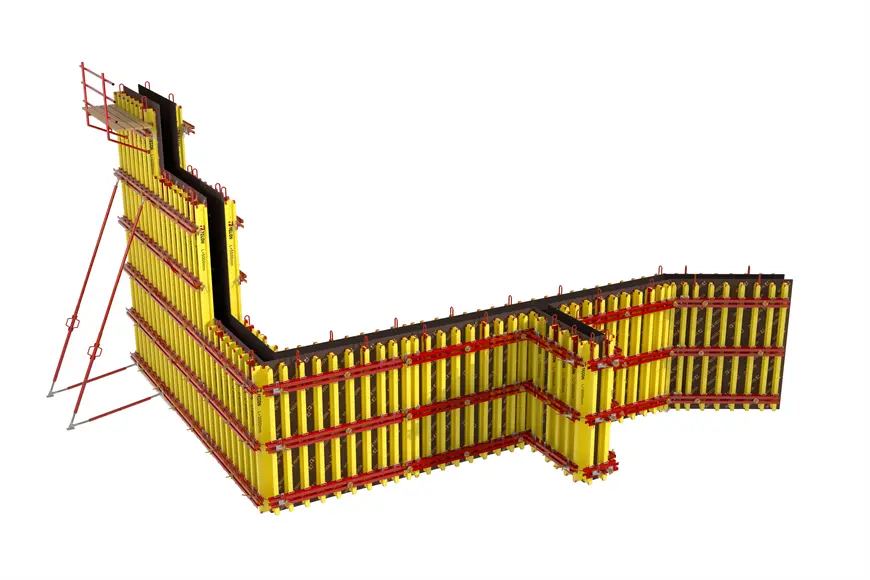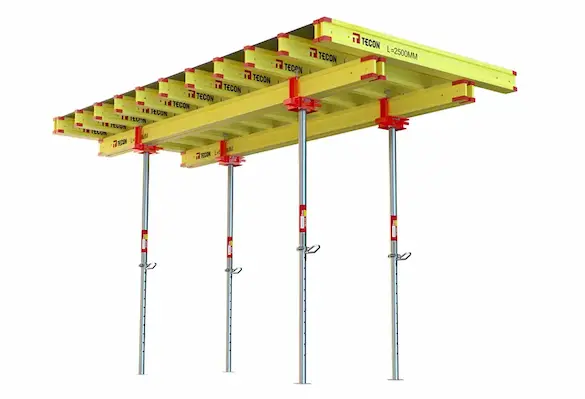TECON Timber formwork mainly includes BASE 20 Wall Formwork, Flex 20 Slab Formwork, Slab Table Formwork and BASE 20 Column Formwork.
Combining different components such as film faced plywood, steel waler, and steel prop, all above timber formwork can be assembled and used for wall, column, slab, and beam casting.
Due to the large size design, the weight of each formwork unit is also relatively high. Thus crane assistance during site transportation is a must.
Timber formwork is a type of temporary structure used in construction to support concrete during the curing process. Some advantages of using timber formwork include:
Cost-effective: Timber is a relatively inexpensive material compared to other formwork materials such as steel or aluminum.
Easy to handle and install: Timber formwork is lightweight and easy to handle, making it easier to install and move around the job site.
Easy to customize: Timber formwork can be easily cut and shaped to fit any size or shape of the structure being formed.
Absorbs excess moisture: Timber formwork has the ability to absorb excess moisture from the concrete, which can help to prevent cracking and ensure a more consistent finish.
Environmentally friendly: Timber is a renewable resource, and when used responsibly, timber formwork can be a more environmentally friendly option compared to other formwork materials.
Provides good insulation: Timber formwork provides good insulation, helping to maintain a consistent temperature during the curing process and reducing the risk of thermal shock.
Can be reused: Timber formwork can be reused multiple times if properly maintained, making it a more sustainable and cost-effective option in the long term.
The size of timber used in formwork will depend on various factors, including the load-bearing capacity required and the dimensions of the structure being formed. Generally, timber formwork is made from softwood timber such as spruce, pine, or fir.
The available length of timber used for formwork includes: 1.5, 1.9, 2.45, 2.75,2.9, 3.0, 3.3, 3.6, 4.5, 4.9 m, etc.. It also can be customized which depends on the project requirements.
With the wide range of lengths, it can be combined with various formwork types, such as slab formwork, wall formwork, bridge formwork, tunnel formwork, or column and beam formwork. At the same time, it also can used with scaffording or used as the walking platform.
It's important to note that the exact sizes and dimensions of timber used in formwork will vary depending on the specific requirements of the project and should be determined by a qualified engineer or construction professional.



